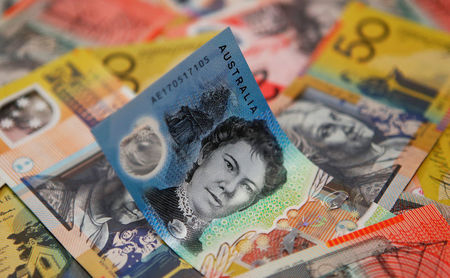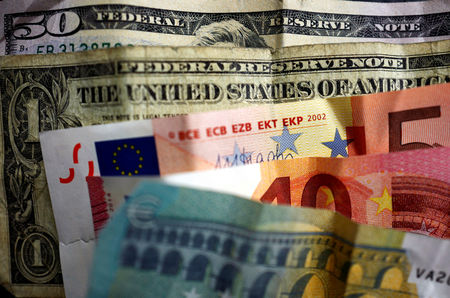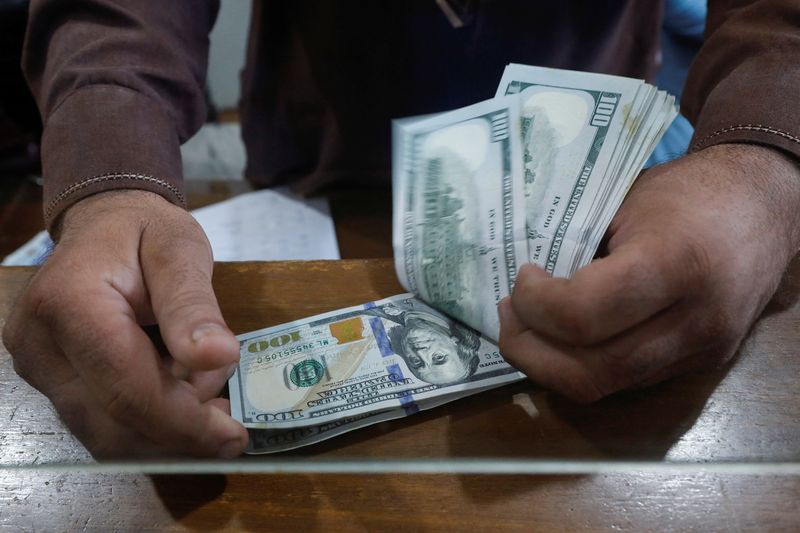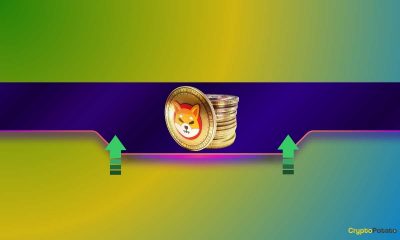Forex
Yen surges on suspected intervention, 160 seen as key level

By Kevin Buckland, Tetsushi Kajimoto and Gertrude Chavez-Dreyfuss
TOKYO/NEW YORK (Reuters) -The yen surged against the dollar in early Asian hours on Thursday on what traders suspected was another round of intervention by Japanese authorities to stop a sharp slide in the currency, with the 160 level seen as a key line of defence.
The dollar tumbled to precisely 153 yen from about 157.55 yen for reasons that were not immediately clear, but traders and analysts were quick to attribute it to dollar selling ordered by Japan’s Ministry of Finance to support a currency languishing at 34-year lows.
The latest move came in a quiet period for the currency pair, after the U.S. stock market had closed and with the Federal Reserve’s monetary policy meeting ending hours earlier.
The dollar was already on the back foot after Fed Chair Jerome Powell confirmed that the central bank’s bias was towards interest rate cuts, even if the timing has been delayed by sticky inflation.
“There’s no doubt the MOF intervened,” said Daisaku Ueno, chief currency strategist at Mitsubishi UFJ (NYSE:) Morgan Stanley Securities, who says officials have set 160 yen per dollar as their “final defence line.”
“This morning’s intervention is proof that Japanese authorities will intervene any time of the day, and any day of the year,” he added. “They will continue to intervene.”
Bank of Japan money market projections for cash balances later showed more than 9 trillion yen ($57.96 billion) discrepancy with broker expectations. It suggests intervention around that size – which would mark a new record – though factors other than foreign exchange intervention can influence money market balances.
remove ads
.
Additionally, Columbia University academic and former finance ministry executive Takatoshi Ito told Reuters it was plausible Japanese authorities intervened to signal they see 160 yen to the dollar as their line in the sand.
The yen has been under pressure as U.S. interest rates have climbed and Japan’s have stayed near zero, driving cash out of yen and into higher-yielding assets.
The pressure has intensified since March as expectations for Fed rate cuts receded, reinforcing the yen’s status as a cheap funding currency.
When contacted by Reuters, Japan’s vice finance minister for international affairs, Masato Kanda, who oversees currency policy, said he had no comment on whether Japan had intervened in the market.
A U.S. Treasury spokesperson also declined to comment on the move in the currency pair.
Yellen told Reuters last week that currency interventions were acceptable only in “very rare and exceptional circumstances” when markets were disorderly with excessive volatility.
CHALLENGING
The difficulty in arresting the yen’s slide has been made clear by the speed at which the currency has reversed direction after its spike.
As of 1000 GMT, the yen was 0.5% lower at 155.23 per dollar, giving up some of the ground it gained overnight.
And it remains down about 10% against the dollar this year amid receding bets for near-term Fed rate cuts, while the Bank of Japan has signalled it will go slow with further policy tightening after its first rate hike since 2007 in March.
The gap between long-term government bond yields in the two countries is a yawning 376 basis points, which helped push the yen to the weakest since April 1990 at 160.245 per dollar on Monday. Official data earlier this week suggested a sharp rebound that followed was due to Japanese intervention totalling about $35 billion, close to a record amount. The finance ministry has consistently declined to say whether it was behind the move.
remove ads
.
($1 = 155.2900 yen)
Forex
UBS maintains RBA rate cut forecast, weighs in on AUD/USD

On Thursday, UBS provided insights into the Australian Federal Treasurer Jim Chalmers’ third budget announcement, which reported a second consecutive surplus of AUD 9.3 billion.
Despite this positive outcome, UBS highlighted a projected deficit of AUD 28.3 billion for the fiscal year 2024-25, a figure that is wider than the Treasury’s earlier forecasts.
The firm pointed out that the deficit projection for 2024-25 might be based on overly conservative commodity price assumptions.
UBS suggests that commodity prices are likely to remain higher than anticipated, which could lead to upward fiscal revisions in the future. This outlook is based on details found in the footnotes of the budget document.
In light of the budget details, UBS confirmed that their expectations for the Reserve Bank of Australia’s (RBA) monetary policy remain unchanged. They continue to forecast a 25 basis points cut in the cash rate in February 2025.
Moreover, UBS anticipates that the Australian dollar will maintain its higher trading range against the US dollar, fluctuating between 0.65 and 0.675.
The budget surplus achieved this year contrasts with the anticipated deficit for the next fiscal year. This shift reflects the dynamic nature of Australia’s economic landscape and the challenges that may arise in the medium term. UBS’s analysis suggests that the budget’s implications have been thoroughly considered and have not altered their long-term economic forecasts for Australia.
UBS’s commentary provides a focused perspective on the fiscal situation in Australia, without implying broader economic trends or industry-wide impacts. The firm’s projections are specific to their analysis of commodity prices and the anticipated actions of the RBA, taking into account the latest federal budget details.
remove ads
.
This article was generated with the support of AI and reviewed by an editor. For more information see our T&C.
Forex
Dollar stabilizes after sharp CPI-induced fall; euro hands back some gains

Investing.com – The U.S. dollar steadied in European trade Thursday, after dropping to multi-week lows overnight in the wake of a milder U.S. inflation report, which brought Fed rate cuts back into focus.
At 04:25 ET (08:25 GMT), the Dollar Index, which tracks the greenback against a basket of six other currencies, traded 0.1% higher at 104.285, having fallen to a five-week low just below 104 overnight.
Dollar on back foot after key inflation data
The dollar remains on the back foot after the latest U.S. inflation data raised expectations the will deliver two interest rate cuts this year, probably starting in September.
Wednesday’s rose by 0.3% in April, below an expected 0.4% gain, which came as a relief to markets after sticky consumer prices in the first quarter had led to a sharp paring of rate cut bets and even stoked some worries of an additional hike.
The data also resulted in U.S. Treasury yields sinking to six-week troughs, as traders reassessed the likely path of the Fed’s monetary policy.
“Markets have given a greater weight to the encouraging news coming from two days of inflation figures, which has caused the dollar to almost entirely erase the gains after the CPI disappointment in mid-April,” said analysts at ING, in a note.
There are a number of Fed speakers due to opine later in the session, but it’s likely investors will need concrete evidence if rate cut expectations are to be changed drastically from now.
remove ads
.
“Our preferred call at this stage is not for a continuation of a dollar decline until the end of May, but instead a period of quiet trading with little sense of direction and low volatility. That’s mainly because hard data is needed to move the needle substantially on Fed pricing, and the next key release – core PCE – is only on 31 May,” ING added.
Euro retreats from earlier highs
In Europe, traded 0.1% lower to 1.0867, with the euro retreating slightly Thursday after earlier climbing to its highest since March 21.
The is widely expected to start cutting interest rates from a record high in June, and markets now see up to three rate cuts this year, or two beyond June, most likely in September and December.
“The 1.0900 level should not be a very strong resistance if U.S. data – for example, jobless claims today – adds pressure on the dollar. However, a move to the 1.1000 benchmark levels seems premature given the still sticky inflation picture in the U.S.,” ING said.
fell 0.1% to 1.2675, with sterling handing back some of the previous session’s gains when it climbed above 1.27 for the first time since April 10.
The is also expected to cut rates from a 16-year high this summer, but recent stronger than expected GDP growth could delay this until after the ECB moves.
Yen posts minor gains after weak GDP data
In Asia, fell 0.2% to 154.64, with the yen benefiting from the dollar’s weakness, but the pair remained well above levels hit earlier in May, when the government was seen intervening in currency markets.
remove ads
.
The yen’s recovery stalled as data showed the Japanese economy shrank much more than expected in the first quarter, raising doubts over just how much headroom the Bank of Japan has to keep raising interest rates.
traded largely flat at 7.2187, as sentiment towards China remains weak after Washington imposed stricter trade tariffs on China’s key industries, such as electric vehicles, medicines and solar technology.
Forex
Yen climbs while dollar stabilises after US inflation ebbs

By Harry Robertson and Tom Westbrook
LONDON/SINGAPORE (Reuters) – The Japanese yen rallied for a second day on Thursday after data on Wednesday showed a slowdown in U.S. inflation, while the dollar found a footing against other currencies following a sharp drop the previous day.
U.S. inflation slowed to 0.3% in April from a month earlier, down from 0.4% in March and below expectations for another 0.4% reading, Wednesday’s data showed.
Year-on-year core inflation – which strips out volatile food and energy prices – fell to its lowest in three years at 3.6%. Meanwhile, retail sales were flat, suggesting conditions for Federal Reserve interest rate cuts are falling into place.
The dollar dropped 1% against the yen on Wednesday after the data and was down a further 0.38% on Thursday at 154.32, having fallen as low as 153.6 before weak Japanese growth figures took some of the shine off the yen.
The Japanese currency has fallen around 9.5% this year as the Bank of Japan has kept monetary policy loose while higher Fed interest rates have drawn money towards U.S. bonds and the dollar. The yen has been particularly sensitive to any widening or closing of the interest rate differential.
The , which tracks the currency against six major peers, was last up 0.11% at 104.32 on Thursday after falling 0.75% on Wednesday as investors raise their bets on Fed rate cuts, now envisaging two reductions by the end of the year.
Some analysts said Fed officials will want to see proof of inflation’s downward path before countenancing cuts, a point made by Minneapolis Fed President Neel Kashkari on Wednesday.
remove ads
.
Francesco Pesole, FX strategist at ING, said: “In practice there isn’t all that much to be all that optimistic about. Inflation is moving in the right direction but still not at levels that would allow the Fed to cut rates.”
Pesole said investors were now waiting for U.S. personal consumption expenditures inflation data in late May. “My view at this stage is that we could just default to another couple of weeks of low volatility, lack of direction, and range-bound trading.”
The euro hit a two-month high at $1.0895 on Thursday before dipping to trade 0.1% lower at $1.0874. Britain’s pound reached a one-month top of $1.2675 before falling back slightly.
The Australian dollar, which surged 1% on Wednesday, hit a four-month high at $0.6714 but then paused after an unexpected rise in Australian unemployment.
It was last at $0.6684 as traders priced out any risk of a further rate hike in Australia.
touched a three-week high of $66,695 before dipping slightly.

 Forex2 years ago
Forex2 years agoForex Today: the dollar is gaining strength amid gloomy sentiment at the start of the Fed’s week

 Forex2 years ago
Forex2 years agoHow is the Australian dollar doing today?

 Forex1 year ago
Forex1 year agoUnbiased review of Pocket Option broker

 Forex2 years ago
Forex2 years agoDollar to pound sterling exchange rate today: Pound plummeted to its lowest since 1985

 Cryptocurrency2 years ago
Cryptocurrency2 years agoWhat happened in the crypto market – current events today

 World2 years ago
World2 years agoWhy are modern video games an art form?

 Stock Markets2 years ago
Stock Markets2 years agoMorgan Stanley: bear market rally to continue

 Economy2 years ago
Economy2 years agoCrude oil tankers double in price due to EU anti-Russian sanctions

































